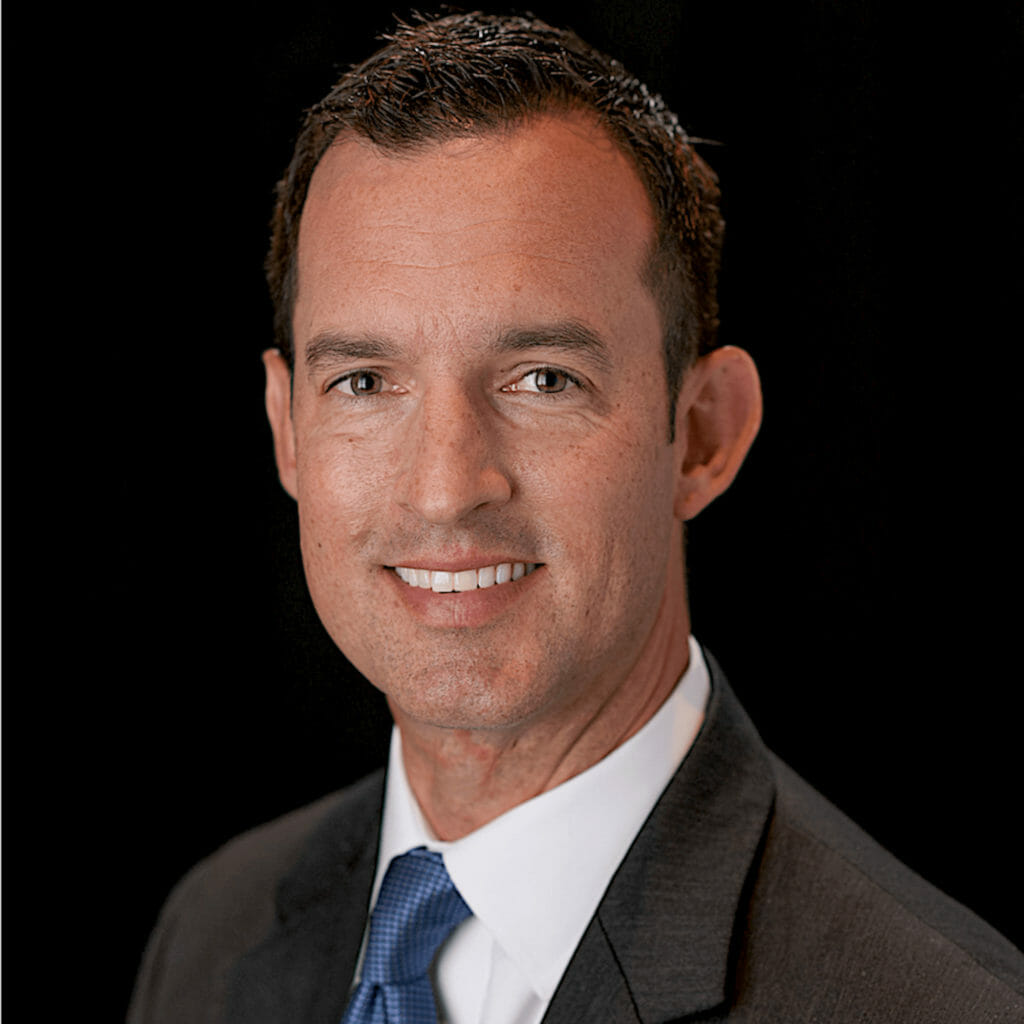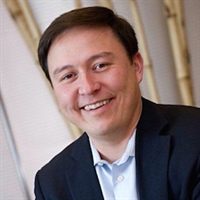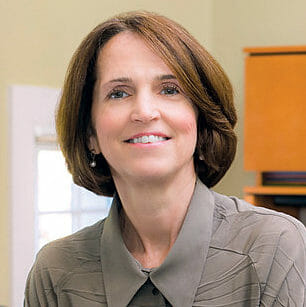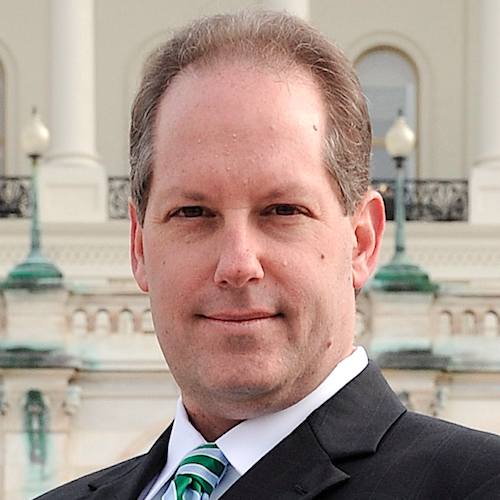
As 2021 began, more coronavirus financial relief was planned for companies and individuals, and two vaccines against COVID-19 were being distributed and administered to high-risk populations, including older adults living in congregate settings and those who care for them. With hopes growing that the severe but necessary restrictions and safety protocols in place at senior living communities for the past 10 months may ease as the year progresses, a new strain of the virus also was making its presence known in spots throughout the country, reminding everyone that a post-COVID-19 world remains elusive, for now.
Indeed, virus-related matters will dominate the actions of senior living owners and operators for the time being, industry leaders told McKnight’s Senior Living. And specifically, implementing vaccination will be one of the most immediate challenges of 2021.

“Even though the vaccine gives us hope, the fight is still not over,” National Center for Assisted Living Executive Director Scott Tittle said. “It will likely take months for all our residents and staff to be vaccinated and fully protected from the virus, so we must remain vigilant, and we’ll need continued support from public health officials.”
NCAL and sister organization the American Health Care Association, with members in skilled nursing, have challenged states to complete vaccination of all long-term care residents and staff members by March 1, Tittle noted.
National Investment Center for Seniors Housing & Care President and CEO Brian Jurutka noted the complicated logistics involved with the vaccine rollout. “It may also be challenging to get full buy-in of residents and staff to be inoculated,” he said.
Indeed, media reports have relayed that sizable numbers of healthcare workers in some areas have declined the vaccine. In Ohio, for instance, Gov. Mike DeWine expressed concern that approximately 60% of nursing home employees in the state were not taking the COVID vaccine in early clinics (80% of long-term care residents, by comparison, were getting it). Similar scenes have been playing out in other states.
“Full compliance is certainly desirable,” Jurutka said.
American Seniors Housing Association President David Schless anticipated a “chaotic and uneven” vaccination process for staff members and residents. “ASHA has been very focused on working with both the Centers for Disease Control and Prevention and with the state governors to ensure that all senior living staff and residents receive the vaccine as it becomes available on a prioritized basis — including independent living,” he said.
Time is of the essence. Approximately 5,000 deaths per week are occurring due to COVID across independent living and assisted living communities and skilled nursing facilities, and more than 1,000 long-term care workers have died from the virus, AHCA / NCAL President and CEO Mark Parkinson recently noted. Although just 1% of COVID cases in the United States have hit people in long-term care, more than 40% of the deaths have occurred in such settings, he said.
Emotional damage
Even when large numbers of senior living workers and residents have been vaccinated, however, the longer-term challenges of repairing the emotional and economic damage wrought on the industry by the pandemic will remain.

“It’s safe to say COVID-19 is unlike anything any of us have ever seen before and it specifically has had — and continues to have — a tremendous, targeted impact on the senior living industry,” Argentum President and CEO James Balda said.
On top of the effects of necessary visitor restrictions, he said, staff members, residents and their families have paid an emotional price due to working long hours, managing day-to-day personal challenges, making difficult choices and having difficult conversations, “and the most unfortunate aspect of all — the loss of lives.”
Jurutka echoed Balda’s comment. “The most significant impact of the pandemic on senior living owners and operators has been the loss of life of residents and staff who are on the front line of the pandemic,” Jurutka said. “The industry is based on caring for older Americans, every one of whom has a story and a family behind them.”
The toll on staff members and residents has been “enormous,” Tittle said. “Not only has it been traumatic to lose so many residents and colleagues, it has been exhausting — physically and emotionally — battling this virus day in and day out.”
Economic effects
And owners and operators are continuing to experience economic effects as well.
“Senior living communities needed — and continue to need — support for personal protective equipment, tests and supplies, staff and the money to pay for all of those things,” LeadingAge President and CEO Katie Smith Sloan said.
“Advocacy at the state and federal levels has always been important in aging services, but the pandemic has certainly underscored the importance of engaging with policymakers,” she added.
Tittle said the pandemic has highlighted to senior living owners and operators the benefits of belonging to a national association.
“For many assisted living providers, they haven’t seen a need to belong to a national organization, given that it’s a state-regulated industry,” he said. “But our ability to work with the administration and Congress to relay what’s happening on the frontlines and advocate for resources has been instrumental. Assisted living really felt forgotten in the early months of the pandemic, but we made it our job to not let that happen, and now assisted living providers have access to federal dollars, testing and vaccine priority.” Advocacy efforts will continue with the new administration and Congress, he said.
Educating lay journalists also has been helpful, Balda said.
“This pandemic brought to light how misunderstood the senior living industry truly is,” he said. “We spent countless hours educating reporters and policymakers on the differences that exist among long-term care settings, which has proven to be critical in acquiring the resources necessary to continue to battle this virus.”
Tittle described the business costs as “extraordinary.”
“Providers have dedicated an exorbitant amount of resources for PPE, testing and staffing, and assisted living providers did not receive any financial aid until September — more than six months into the pandemic, he said. And at the same time that expenses were increasing, Tittle noted, occupancy hit record lows as fewer older adults and families sought senior living services due to virus concerns and visitation restrictions put in place.

“One of the challenges of the pandemic in congregate care settings has been the need to impose physical distancing at the property,” Jurutka said. “This has limited social interaction among residents themselves as well as the ability of family members to visit their loved ones.”
Financially, he said, the pandemic also has hit both revenue and experiences in ways that have had negative effects on net operating income.
“The uncertainty associated with these changes, along with the unknown timeline and endpoints, has resulted in many traditional capital providers pulling back from looking for new business and instead focusing on helping their operator partners weather the storm,” Jurutka said.
Although they began before the pandemic, challenges related to the insurance market continue to face senior living, Schless said, “with far fewer carriers willing to insure these settings, coverage diminishing and costs going up dramatically.”
“This is a significant concern that the industry will continue to address for the foreseeable future,” he said.
Staffing issues exacerbated
Staffing issues, a perennial challenge in senior living, have been exacerbated by the pandemic, according to the industry leaders.

“Throughout aging services, workforce shortages are a concern,” Sloan said. “While much of the focus has been on healthcare staff, the need for qualified workers is broad, spanning all levels of the field and a variety of jobs, from counselors and social workers to building and ground maintenance workers, as well as nursing assistants and home health aides.”
“Hero pay” and agency help have been used to address shortfalls, Jurutka said.
“That said, this is a time when culture within the community staff becomes a differentiator,” he added. “The pandemic, in addition to shining a spotlight on the sector, has also helped illuminate the space where culture plays — that space between words and actions. Those with a strong culture have an additional tool at their disposal to help minimize the continued staffing challenges faced by the sector.”
Tittle called for “support for innovative programs that will help recruit, retain and attract people to work in long-term care to ensure our nation can support the needs of our residents and patients.”
Restoring reputation
Although the pandemic increased some people’s appreciation for senior living and the fact that the needs of older adults and those who care for them have not been prioritized, Sloan said, the leaders said that, longer-term, the industry has work to do to restore its reputation.
“Reputational restoration for the industry will be ongoing,” Balda said. “We’ll need to come together to remind consumers, media and lawmakers of the innumerable benefits of living in a senior living community and to not only reassure them that communities are safe, but to truly live up to that promise.”
Jurutka said the consumer-focused effort must include prospective residents and the adult children who influence their decisions on where to live. “The vaccine will help restore confidence as the fear and the risk of contracting the virus dissipates,” he said.
NIC also is conducting a study that Jurutka hopes will help counter negative headlines in the lay media about the impact of the pandemic in congregate settings. The research, he said, is examining the incidence and fatality rates of the coronavirus by care setting, “put into context of what was known about the virus at the time.”
The second phase will compare this information with data about a similarly frail population in the general public, he said. NIC expects to share results in the spring.

ASHA launched a digital public relations campaign through its Where You Live Matters consumer platform in the spring to combat the “inaccurate and overly negative” coverage of the industry in the lay press, Schless said.
“Over the course of 2020, with evolving content and messaging and across a multitude of channels, we emphasized the safety precautions that were put in place in response to COVID, as well as the many benefits of senior living,” he said. “There is no doubt that our public relations efforts helped blunt the full impact, but the industry will need to continue rebuilding the consumer’s trust and that will be one of the core challenges of 2021.”
ASHA, Schless added, plans to continue to use the Where You Live Matters platform to help underscore the value proposition of senior living throughout the year.
At the community level, he said, “Clearly, the industry will need to redouble its focus and efforts on marketing and sales as the opportunity to improve occupancy moves front and center.” Once residents, staff members and the general public has been vaccinated, “the industry can again focus on doing what it does best — fostering social connections, friendships, meaningful opportunities to learn, grow and to connect with others in meaningful ways,” Schless said.
Regulation
The possibility of federal regulation of assisted living also will be on the minds of those in the industry in 2021.
“For better or worse, the COVID-19 pandemic has elevated awareness of the senior living industry at the federal level,” Balda said. “With this awareness will come increased scrutiny in the areas of reporting requirements, emergency planning and infection prevention and control, among others. I have no doubt the industry will begin to see legislation introduced to try to further regulate senior living at both the federal and state levels, so we’ll need to have our antennas up to anticipate this well before it happens.”
Argentum, he said, is prioritizing government relations by increasing its circle of public policy experts, internally and externally, and expanding advocacy activities at the federal and state levels.
Tittle previously said that he and NCAL’s board members do not regret seeking federal pandemic aid, even if it brought attention to the industry.
“I was really proud of our board early on in the pandemic, because we talked to them about what’s to come potentially with the receipt of federal funds,” he told McKnight’s Senior Living in October. “They really took a stand and believed that we need to do what’s best for the sector now to help people get the resources that they need to fight the battle and help save lives and help protect staff, and that if those questions were to come, then we certainly would be prepared to discuss them at that time.”
Schless said it also will be important for the industry to work at the state level “to identify areas where the regulatory framework needs to be improved to reflect the current assisted living product.”
“The industry will also, hopefully, consider the many benefits of independent third-party accreditation as a mechanism for improving quality and avoiding the pitfalls of federal oversight,” he added.
Other areas of focus
Along with rebuilding consumer confidence in the safety of congregate settings, Balda said the top issue facing senior living operators in 2021 will involve liability and litigation.
“We’ve been working to advocate for reasonable liability protections throughout this entire crisis, as guidance changed sometimes daily,” he said. Senate Majority Leader Mitch McConnell (R-KY) prioritized the inclusion of liability protections for businesses in coronavirus relief legislation in 2020, but aid packages passed without such measures last year.
Sloan said that telehealth access and payment issues need to be addressed, the country’s broadband infrastructure should be upgraded to ensure availability and access, a solution to meet middle-market consumers’ housing needs must be found, and that the financing and delivery of long-term services and supports, as well as affordable housing with supports for older adults, are areas ripe for “a fresh look.”
Long-term effects
Will the industry be changed forever by the pandemic? Absolutely, the leaders said.
“The pandemic accelerated a trend NIC has been highlighting at our Spring Conference for several years — the intersection of healthcare and housing for older Americans,” Jurutka said. “When appropriate, bringing healthcare to seniors instead of bringing seniors to healthcare is good for seniors, it’s good for health insurers, and it’s good for seniors housing and skilled nursing operators. The ability to explain to potential residents and their adult children how a community is able to provide healthcare onsite will become a stronger differentiator compared to those communities who are not able to tell that story.”
Infection control will be at the forefront of the minds of potential residents and their adult children, he said. “It will have to be both obvious and effective — obvious in that someone touring the community will want to see evidence of controls, and effective in that it helps both residents and staff minimize potential spread of a virus.”
After all, Jurutka said, there will be other viruses, such as the flu. “There’s an opportunity here for seniors housing and skilled nursing to be viewed as comparatively safe spaces given infection control processes and systems,” he said.
Infection prevention and control protocols, or IPC, will be big, Balda said.
“We have worked very closely with clinical experts across the industry to prepare and distribute IPC guidance to help communities assess readiness for various infectious diseases and emerging pathogens and strengthen operations where appropriate,” he said. “We anticipate that will be a major area of focus for the industry. In fact, in a recent survey of certified directors of assisted living, they suggested that a commitment to safety and IPC would be the number one factor prospective residents will look for in a community, with opportunities for socialization coming in a close second.”
Tittle predicted changes and lessons learned not just in long-term care but throughout the entire healthcare system. “We hope this crisis will shine a light on the need to prioritize our nation’s seniors to ensure they have access to high-quality care and meaningful connections with their loved ones and surrounding communities,” he said.
Technology adoption is another area that “has taken a huge leap forward by necessity,” Jurutka said. “The infrastructure and staffing that enables residents to access telehealth is just one example. That same infrastructure enables social connectivity with family and other residents in a way that doesn’t require being in the same physical location,” he said.
Sloan also predicted a larger role for technology.
“Throughout the pandemic, we’ve seen the tremendous benefits of technology in senior living, whether for telehealth or for social connectedness,” she said. “This healthcare crisis has highlighted the significant need for improved technology infrastructure through the U.S., particularly in rural communities, to ensure that older adults can access needed services and also stay connected, wherever they live. Because of the pandemic, our sector has made tremendous strides in technology use and adoption.”
Balda predicted lasting operational changes for senior living as well, including more technology, not only for resident engagement but for staff reporting and human resources, as well as changes to roles and responsibilities for staff members, design considerations and dining service alterations.
Promising future
One positive of the pandemic, Sloan said, is that staff members have gained “a sense that the work that they do matters.”
And it will matter to an increasing number of older adults, too. Looking to the future, Sloan pointed out that demand for senior living will continue to grow as the 75+ age cohort increases by 24 million people through 2050.
Schless said he believes the industry will emerge from the pandemic stronger and more able to play a role in the broader healthcare system.
“I think the industry will also be better equipped to communicate with families and better equipped to engage older adults in the future,” he said. “The industry will prove resilient and will flourish again as it always has when a community is well-conceived and well-operated.”
Jurutka said that the value proposition of senior living will need to be stronger than ever, however. “It needs to be aspirational,” he said. “It will need to inspire a sense of engagement, a sense of purpose and a sense of community that is supported behind the scenes by a robust ability to support the healthcare needs of residents.”
But the future is bright, Jurutka said, and the industry “will continue to serve older Americans as it provides care, housing, socialization and a better quality of life for millions.”



